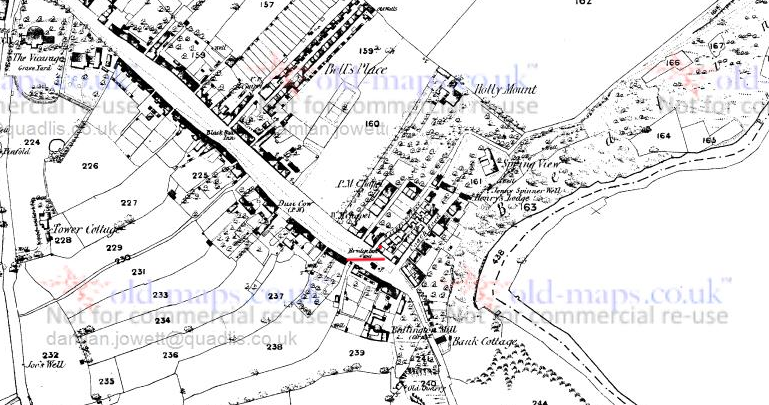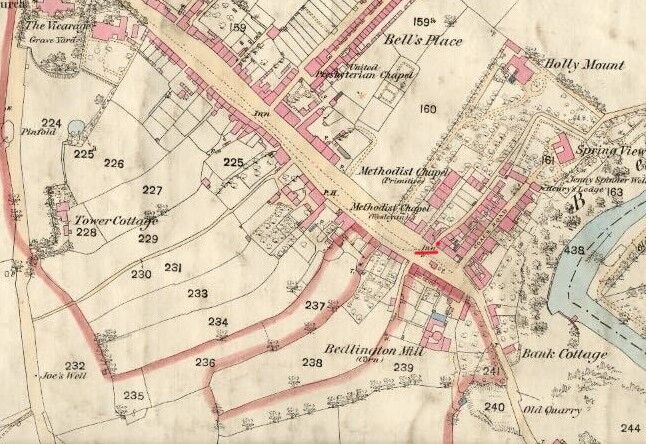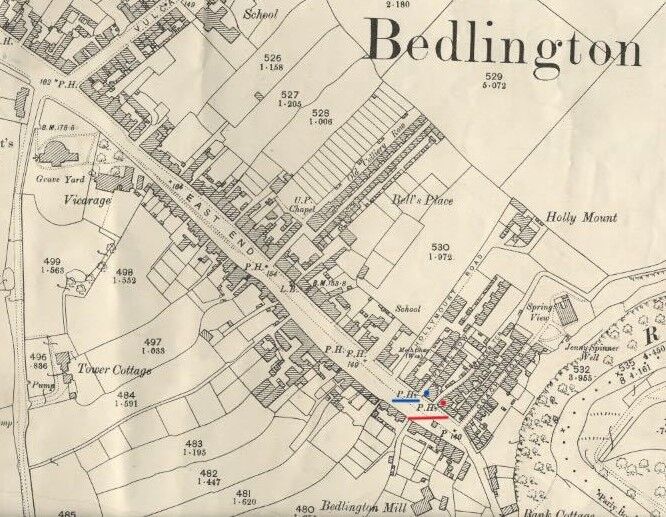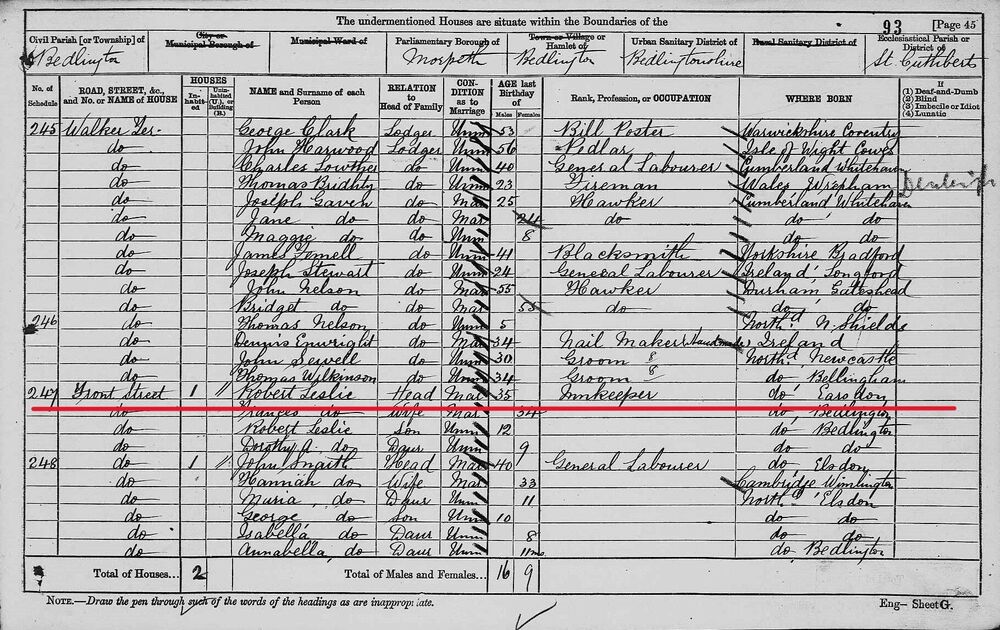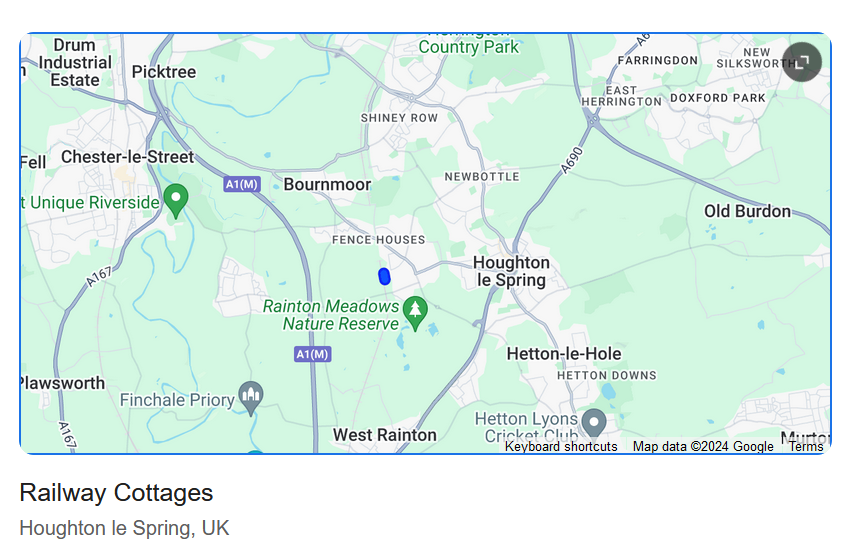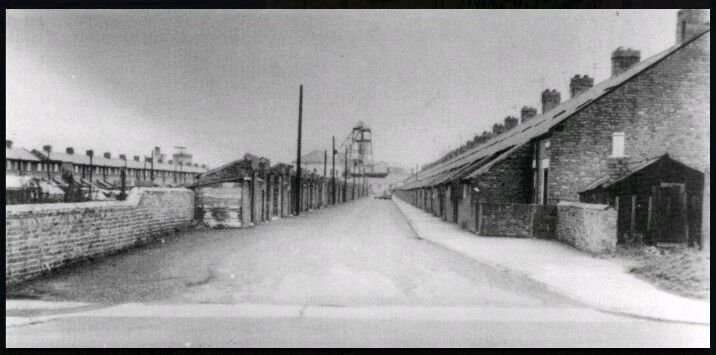.jpg.cdd7f8371d17e2f2f2e2a0e21e02f727.jpg)
Canny lass
Supporting Members-
Posts
3,596 -
Joined
-
Last visited
-
Days Won
407
Content Type
Forums
Gallery
Events
Shop
News
Audio Archive
Timeline
Everything posted by Canny lass
-
@HIGH PIT WILMADigress all you like bonny lad! The 'ramblings' of one with first-hand knowledge are worth their weight in gold.
-
Nice! I like the idea of the community drop-ins.
-
Did I understand you correctly, Vic, - your electricity comes from waterpower?
-
Same here. The biggest distributor is in fact called Waterfall.
-
The news bulletin was just released on Friday night. What Northvolt have said is that "1 600 jobs must go". From what I understand, 1 000 of these jobs are at the factory, 400 are at the labs for product development and 200 at the head office in Stockholm so they are spread over the whole company. As yet nobody has been given notice of termination of employment, so you won't see any changes yet. Just a couple of weeks ago they were talking about just 300 jobs that must go! Naturally, the unions are up in arms. I think most people have expected this as Northvolt has been experiencing a financial crisis for a couple of years now and bankruptcy has been up for discussion on several occasions.
-
Breaking News - Northvolt have just announced that 1 600 jobs must go at the Skellefteå factory! I wonder what they'll do with all the housing that was built especially to accommodate the workforce that was 'needed'. I agree with you, Vic, that tidal energy is worth looking at more closely. The tides are reliant on the sun and the moon and they aren't going anywhere so they should be a constant, reliable source. Sweden doesn't have a great deal of tidal water so it's maybe not the best option here but the Faroe Islands (Denmark) are investing heavily in tidal energy, planting 'kites' on the ocean floor that then sway in the tidal waters just as real kites sway in the air. They are planning on being totally converted to tidal power by 2030 so that project is worth watching.
-
Pity they aren't interested in establishing themselves here! Northvolt premises should be available soon! They promised the earth but despite having thousands employed they haven't been able to produce more than 5% of what they promised. BMW, one of their biggest investors has withdrawn an order for billions because Northvolt simply isn't meeting the promised production and Scania have done likewise. Plans for a further three factories has been placed on hold. Soon there won't be any need for batteries here as sales of EVs has plummeted because of the uncertainty. Having said that, it hasn't helped that Northvolt has had a spate of 'mysterious deaths 'at their factory this year or that petrol prices have reached an all-time low.
-
This link that you posted in topic: Obituary still works. https://www.newmp.org.uk/memimages/05. Enlistment Project Compiled Version.pdf
-
Hi @Miner Granddaughter and welcome to the forum. Bridge Inn, East End, Bedlington has nothing to do with Hartford Bridge Inn. Bridge Inn, East End was located on the main street (Front Street) in Bedlington’s East End on the corner of Walker Terrace. The following map, dated 1859, is not particularly clear but Bridge Inn is in fact named. It can be seen somewhat better, though not named, on the map from 1860. The best map I can find is 1897 which shows the Bridge Inn (marked red) and the Wheatsheaf, its close neighbour, marked blue, on the corner of Chapel Row. In the extract from Evan Martin’s book, which Alan posted above, Robert Leslie is named as the innkeeper of Bridge Inn, East End. I found him in the 1881 census in the building marked red on the above maps - on the corner of Front Street and Walker Terrace.
-
It's horrendous to think that is just a couple of generations ago. We have it very easy with today's working conditions yet there are still those who complain.
-
Oh happy days! That brought back a few memories
-
Thanks HPW! I read a wonderful book some years ago called the The White Slaves of Britain which described vividly the social conditions of 19th century Britain. Some of these "white slaves" were women and children working in Britain's coal mines. The woman would be shackled to a 'cart' (sometimes called a corv) in exactly the way you describe. with a chain from a belt around her waist. She was then called a 'hurrier'. It's the one and only time I've ever seen that word and I've never been able to find its origins. With no child-minding facilities, and needing money, she would have her children, as young as 4 years old, employed in the mine as well - the cheapest of labour. They would push the cart from behind to assist her and they were called 'thrusters' or 'putters'. These people worked in tunnels only 60 cm high. Thank heavens as things got better the tunnels were high enough to stand up in and eventually enough to get a small horse into.
-
Thanks HPW! I knew I could rely on you to come up with the answer! Am I right in understanding that "putting" the tubs could involve either 'pushing' by hand or 'pulling' by horses? I'm asking from a purely linguistic interest in the development of the word 'putting'. I'm wondering if putters might have replaced cartmen doing basically the same work. Tommy the cartman at Netherton was about the same age as my father (born 1900) so he would have been working before 1920. I think my father started working in the pits at 13½. I must admit that I'd never thought about the coal allowance as being in lieu of wages but it leads me to another question. My father died when I was a teenager but my mother and her children lived on in the colliery house and she received a coal allowance. My older brothers were miners but already married and living elsewhere, though not in miners accommodation. The one brother still at home wasn't a miner. Was this a common thing - a kind of widow's allowance - that coal miner's widows continued to be provided with coal and housing? I don't know if my mother had to pay rent or not.
-
.thumb.jpg.7493ddab4a696108cf2b849323d3c155.jpg)
Railway cottages in Shiney Row - WARNES
Canny lass replied to Margaret Daley's topic in Chat Central
I started by looking for marriages between a male Ivison and a female Warnes and followed up by by looking for an Ivison in passenger lists for Australia 1927. I had a stroke of luck when Robert, Bertha and your mother Margaret Audrey turned up. Even better was that they were accompanied by George Alfred Warnes, his wife and son! I worked backwards from him - if that makes any sense! I've started sending you some files. Hope you enjoy their content. -
Just remembered this wonderful site: https://www.rootschat.com/forum/index.php?topic=787374.0 P.S. It would be interesting to know the year that the above birth certificate was issued.
-
I'm not sure I agree that a putter and a cartman ar the same thing. From a purely lexical point of view I believe a putter ’pushed’ tubs. From about the 12th century the word put, meaning to push or shove, was in common use. By the time the 16th century came around its meaning had been extended to include the meanig throw or hurl. It’s obsolete today but lives on to a degree in the highland sport of ’putting the shot’ and in the golfing terms ’put/putter’. Even our everyday word ’put’, meaning to place something in a certain position, has the same roots: Old English putian, Middle English potte. The word putter is in evidence very often in the early 19th century with the meaning ”one who throws (a stone or heavy weight)” and as early as 1743 for a type of golf club. To me it seems logical to extend its use to one who pushes/shoves coaltubs. Also, I’ve never heard of a coaltub being referred to as a cart. We need HPW on this one!!
-
.thumb.jpg.7493ddab4a696108cf2b849323d3c155.jpg)
Railway cottages in Shiney Row - WARNES
Canny lass replied to Margaret Daley's topic in Chat Central
Hi again Margaret! Alan is right. It's not wise to have your e-post floating about on the Internet, even if this site is deemed to be a safe site. I've made a note of your e-post so it's OK by me to have it removed. I'm happy to have helped with your question about the Warnes family and I'll get the files off to you, hopefully today but if not it'll be tomorrow. I'm assuming that I was right about the names of your mother and grandmother? Everything else is related to that being correct. -
A cartman was simply a colliery worker who drove a horse and cart either underground or above ground whenever transport was needed for goods, equipment or even workers. From my own experience, I remember 'Tommy the coalman' in Netherton Colliery in the fifties. Miners, then, received an allowance of free coal and my father's allowance was delivered to us, and everybody else in Netherton, by horse & cart driven by Tommy the coalman as he was known to everybody. My father, however, had earlier worked with Tommy underground where Tommy was a cartman. Lung problems forced Tommy to exchange underground work at the colliery for above ground work - still employed by the colliery. Delivering the coal allowance then became a major part of his work. My father never referred to him as Tommy the coalman. To him Tommy was always Tommy the cartman.
-
.thumb.jpg.7493ddab4a696108cf2b849323d3c155.jpg)
Railway cottages in Shiney Row - WARNES
Canny lass replied to Margaret Daley's topic in Chat Central
@Margaret Daley Hi again, Margaret, I think there has been some misunderstanding. Usually when we talk about ”Shiney Row” and ”Railway cottages” in this forum we are referring to the street shown in the above photo and the two cottages at its eastern end. I’ve had a look at your question about the Warnes family in Shiney Row and if your grandmother was Bertha Warnes and your mother Margaret Audrey Ivison then I’m afraid you’re in the wrong Shiney Row. They had their roots not in the street Shiney Row, in Bedlington, but in the village of Shiney Row located about 30 miles south of Bedlington in Penshaw, County Durham . Your great great grandfather William Warnes, born in Norfolk, lived there from about 1881 until his death in 1925 manning the railway signal box at Penshaw junction and occupying one of four cottages reserved for the job – Railway cottages (marked blue on the map below). Shiney Row is today included in the greater area of Houghton - le - Spring. It’s an easy mistake to make. However, your grandmother, Bertha did have some connection with the Bedlington area as your mother’s birth is registered in Ashington (Morpeth registration district) in 1926. There have been several families of Warnes in the Bedlingtonshire area – though not in the town of Bedlington. They lived predominantly in Cambois, which is located in Bedlingtonshire, but seem to have spread themselves over the years to Ashington and Pegswood. The earliest Warnes I’ve found arrived about the same time as William (Late 1800s) and were, like him, also from Norfolk so they may all be related and there may well be Warnes even today. If you would like any of the documentation related to this you can message me an e-mail address and I'll send the files on to you. -
Hi again Roz I had a look at the entry for your gran in the 1921 census. Your gran’s uncle, David Gray who completed the census form, has a very clear style of hand-writing and I don’t think there’s any doubt that your gran was attending Hall Lindler Academy on a full-time basis. You thought 17 years of age was a bit old to be engaged in full time studies but it’s worth bearing in mind that the 1920s was a ’boom’ time for women’s education. The school-leaving age had risen from 12 – 14 just a couple of years earlier in 1918 and, perhaps more important, women were also given the vote that year - albeit not on the same terms as men! The suffrage movement fought not only for voting rights but for women’s rights in general including the right to education. Further education was becoming popular among the working classes and towards the end of the 1800s even the male dominated Mechanics Institute was allowing women to attend its courses. So there was a lot happening on the educational front for women! I’ve been researching Bedlington and its nearest neighbours for 14 years now and I haven’t ever stumbled across Hall Lindler Academy. That, however, is not to say that it didn’t exist in Bedlingtonshire or anywhere else. Also worth bearing in mind is that the word ’academy’ in 1920 shouldn’t be confused with the same word used today for many establishments for full time secondary education. There were two types of academy: those who’s aim was to advance science, art and literature and those whose aim was to give training in a special field or skill – especially those skills which were useful/needed for employment. The latter arranged courses in just about anything: shorthand, typing, languages, mechanics, woodwork etc. and the courses could range from weeks to years. So, while your gran was engaged in in whole-time studies it may only have been on a short course. I note that David Gray was working for the Coal Company in a white collar position, as he was a clerk (which would account for his neat hand writing!). Perhaps he could have encouraged your gran to move away from the then traditional, factory, serving girl, housekeeper and laundress type of jobs in favour of the ’cleaner’ jobs of bookkeeping, typing, teaching and clerical work. These, together with dressmaking and shop work, were the areas where women predominantly worked in the 1920s. I note that Mary Jane and her husband are living apart a few years after their marriage. Mary Jane and her daughter – your mother – are living in Belford and her husband John Robert is living in Gosforth. While household duties are given as Mary Jane’s occupation, could she have been living there by reason of some earlier special employment? Perhaps you know something of her employment prior to her marriage. That could give some indication of the nature of her education. Sorry I couldn’t be of more help in unravelling the mystery of Hall Lindler Academy but I hope this has given you something to think about.
-
@Roz S Hi Roz S and welcome to the Bedlington forum. What was your grandmother's name and where was she living in 1921? I'll have a look at it and see if I can make sense of it for you.
-
.thumb.jpg.7493ddab4a696108cf2b849323d3c155.jpg)
Railway cottages in Shiney Row - WARNES
Canny lass replied to Margaret Daley's topic in Chat Central
@Margaret DaleyHi Margaret and welcome to the forum! I'm afraid Shiney Row no longer exists and neither does the coal-mine (the Doctor Pit) but this is what it looked like. Shiney Row is the row of houses on the right. The small buildings opposite are Shiney Row's toilets and coal sheds. Railway cottages were two in number and located at the far end of the street adjacent to the pit head and the railway line which was used to take coal to the port. They later became known as Dr Pit cottages. Visit the gallery and search for 'Shiney Row and Doctor Pit' to see more of the immediate area. If you can give me any more information about your grandmother and mother (ex. full name, date of birth, parents names, place of birth) I'll see what I can find out. If you don't want to give information here you can message me. Just move your marker over my 'hat' and choose 'message' on the bottom line. -
It wouldn't be Howlett's on Brick Lane by any chance?


